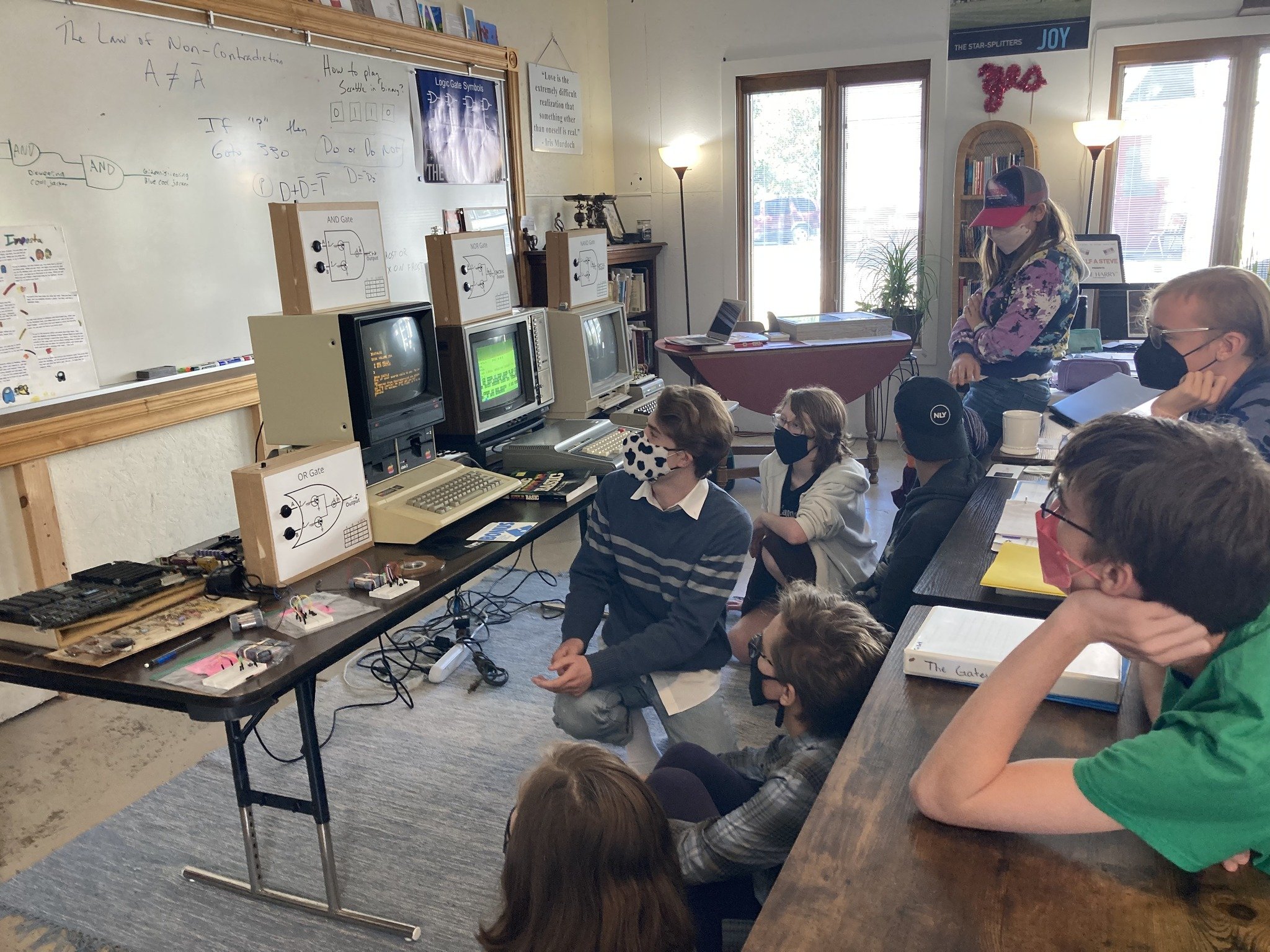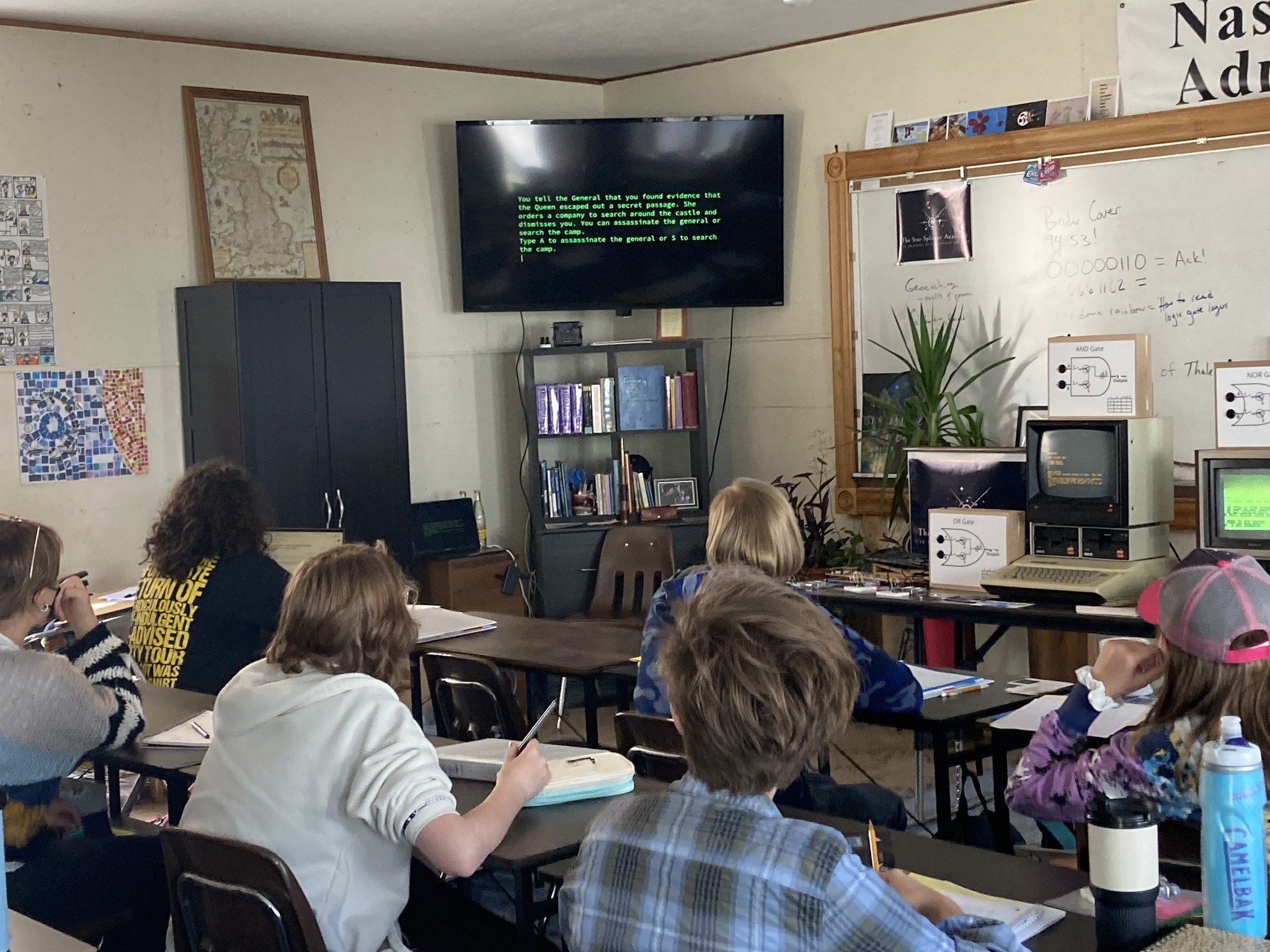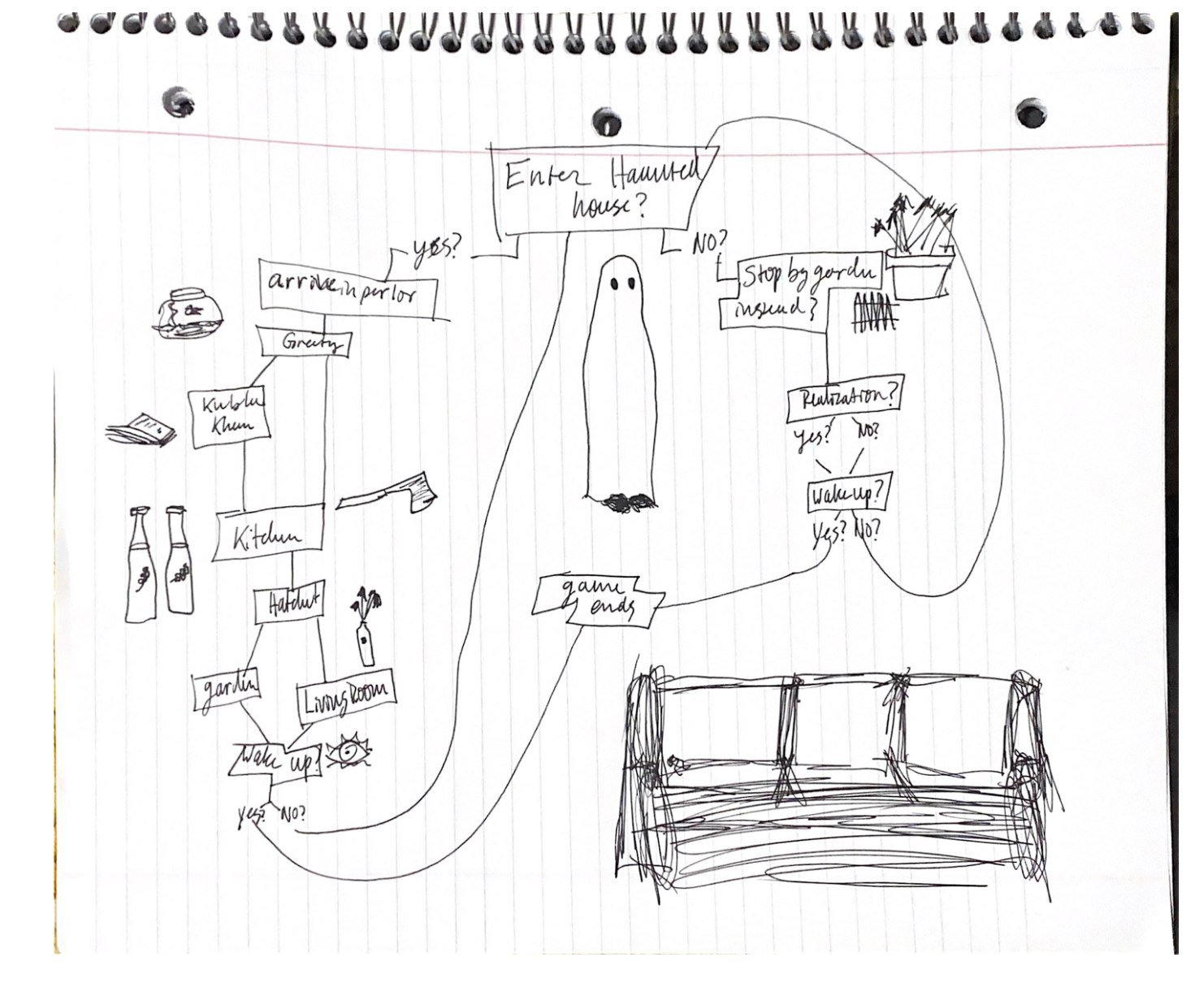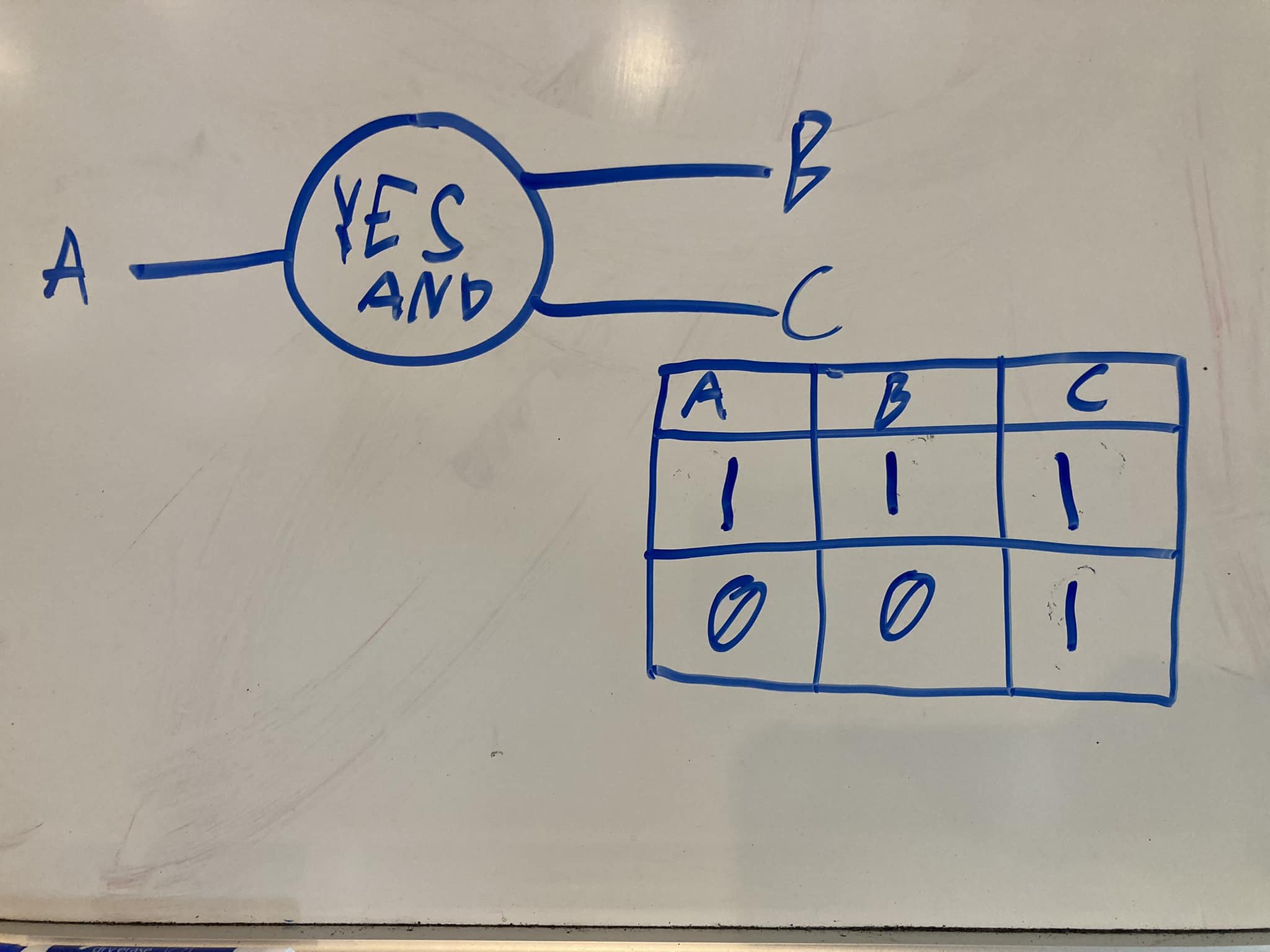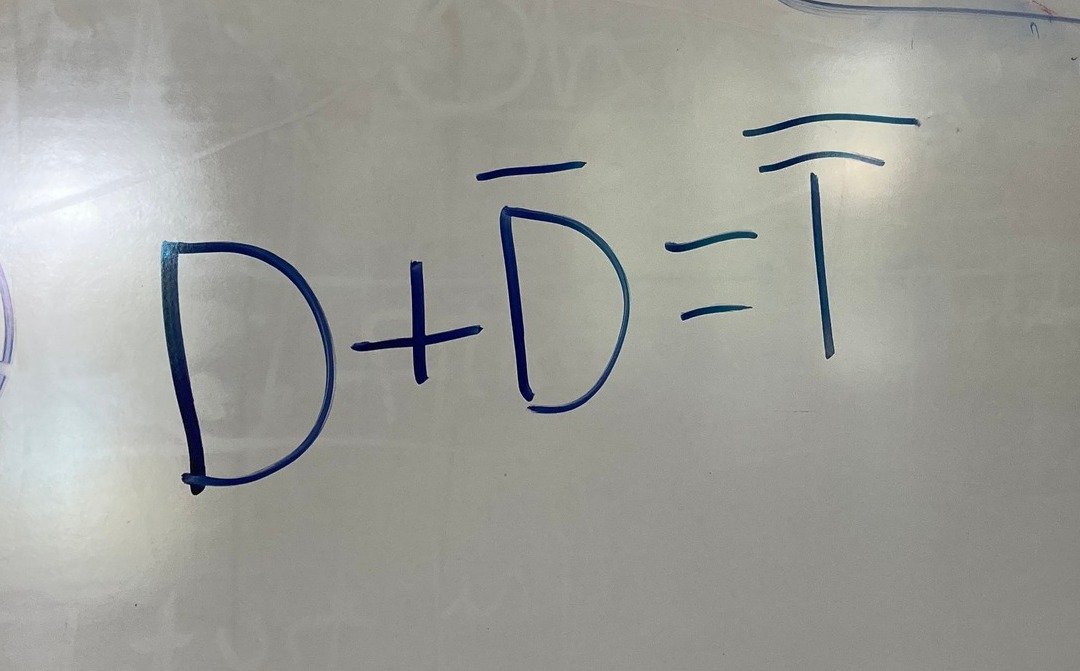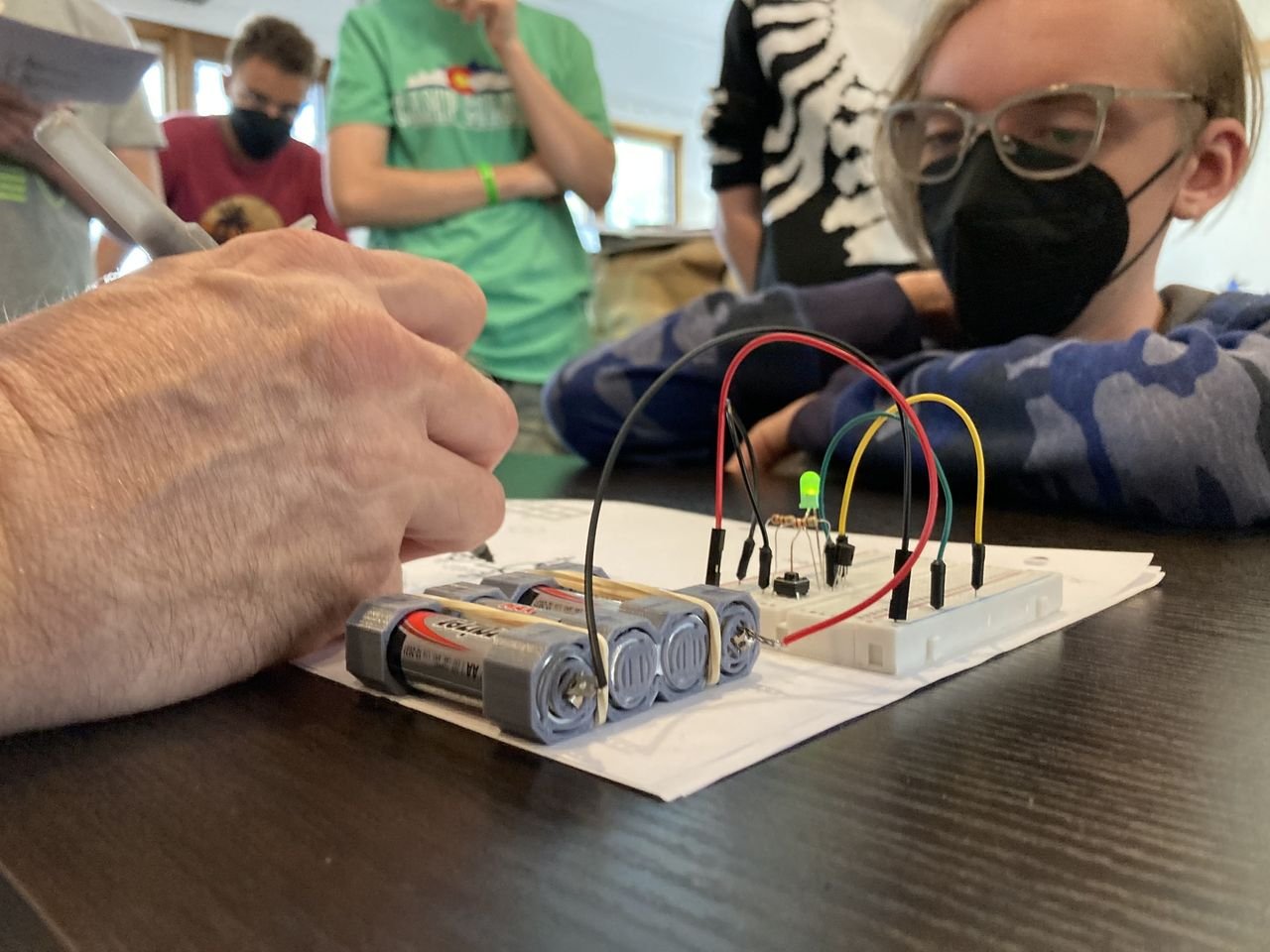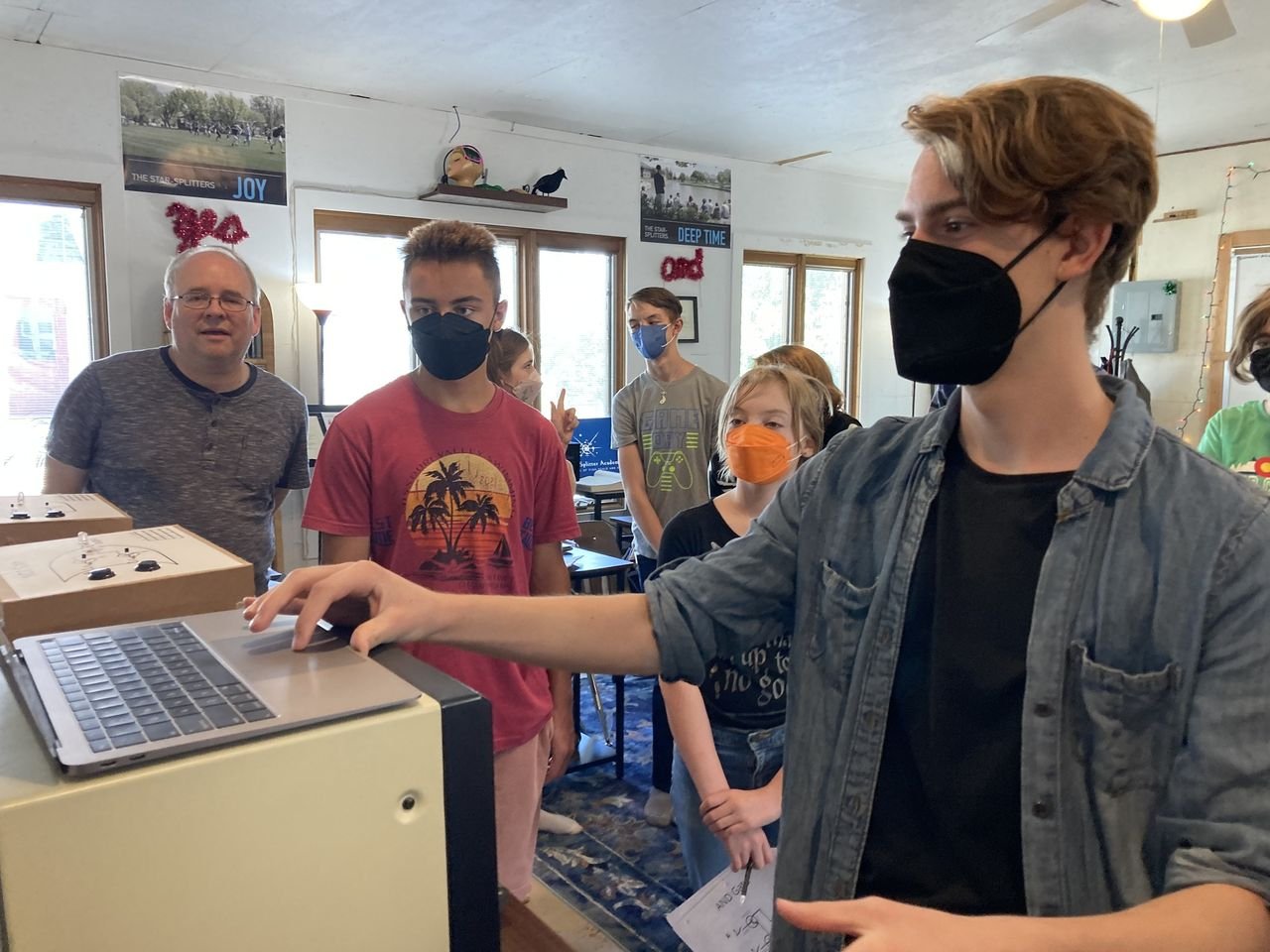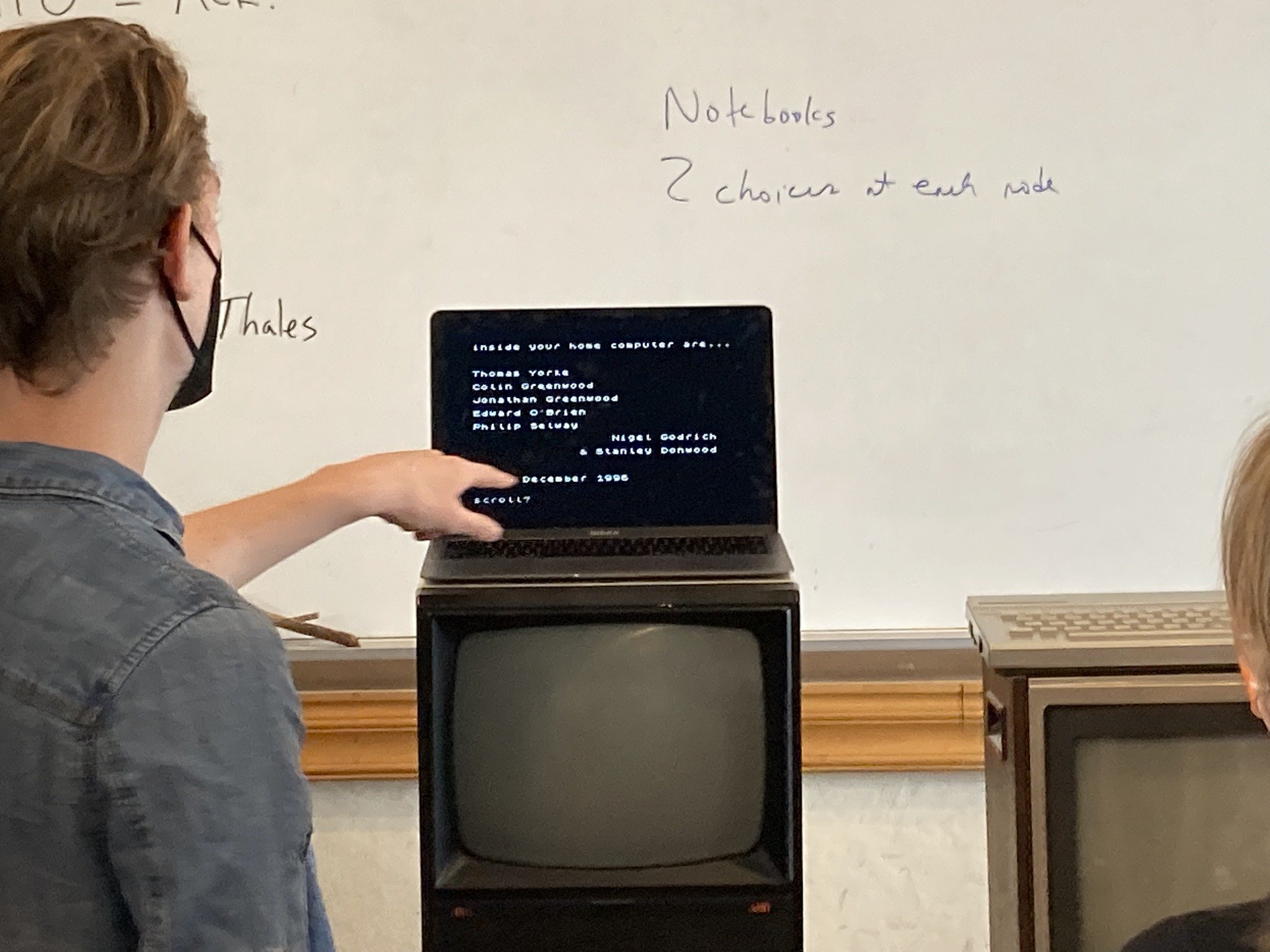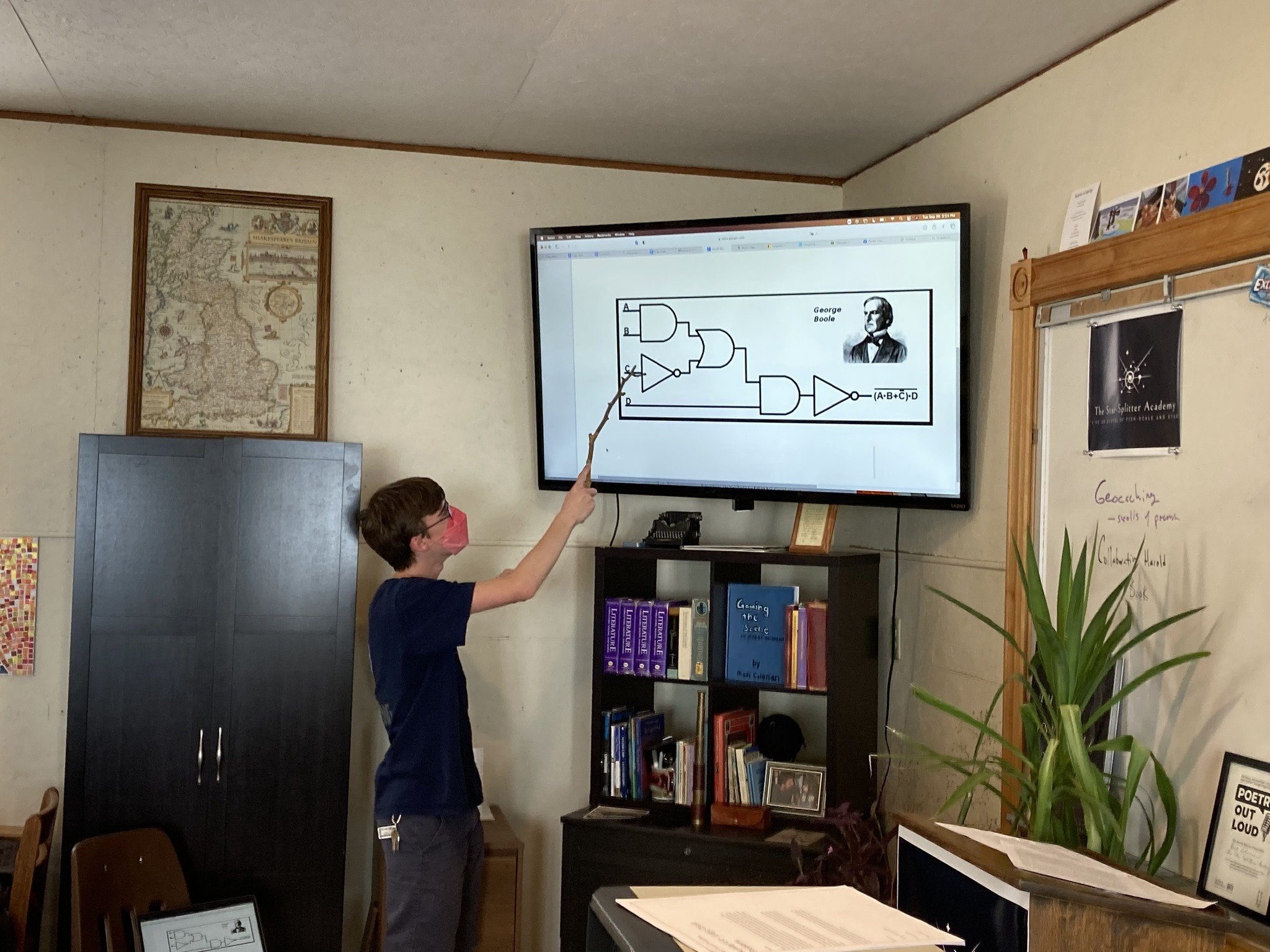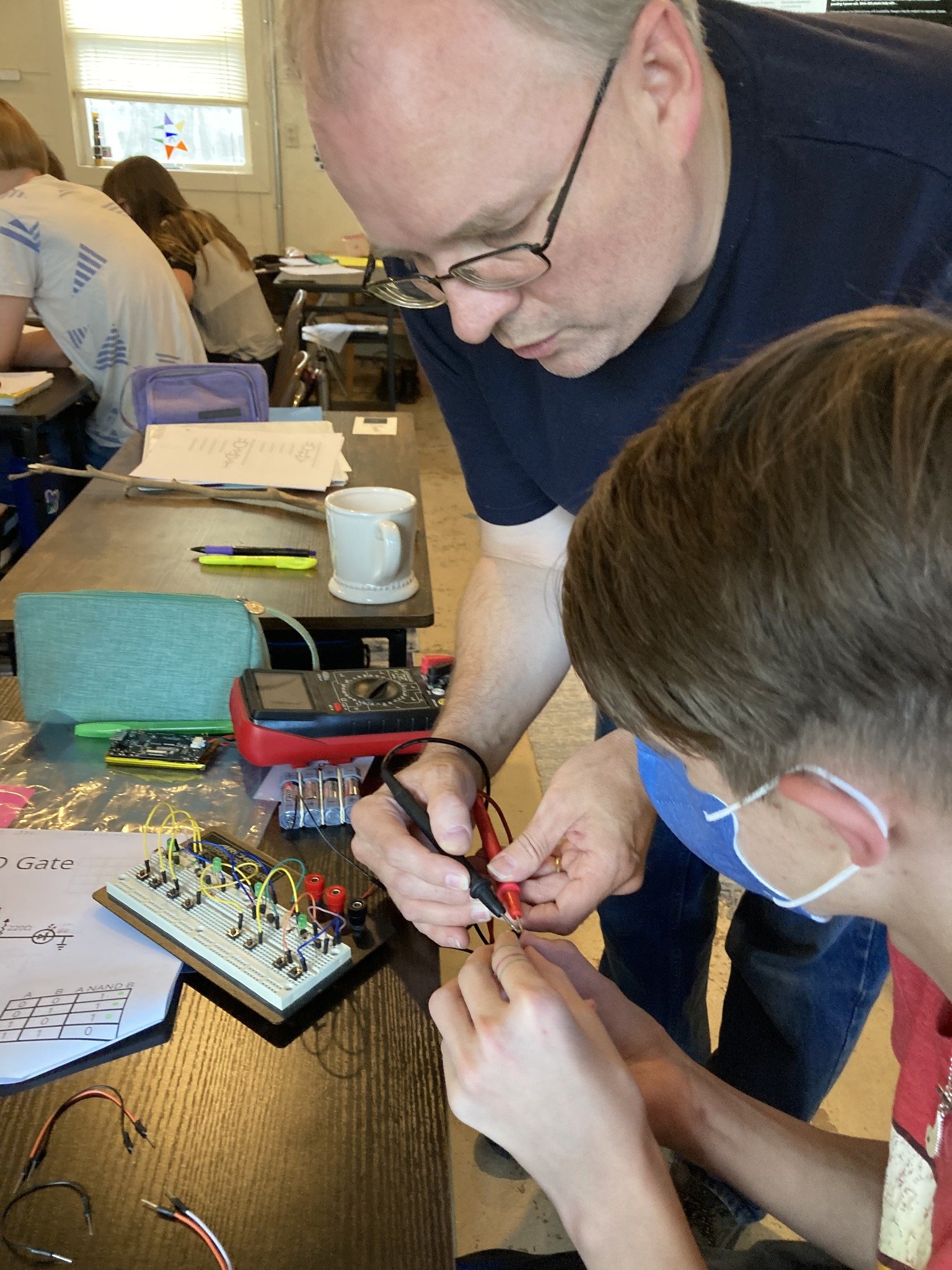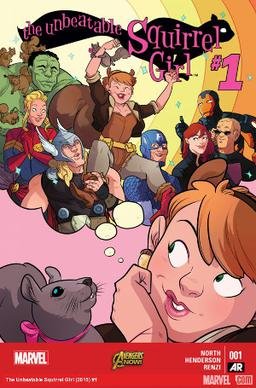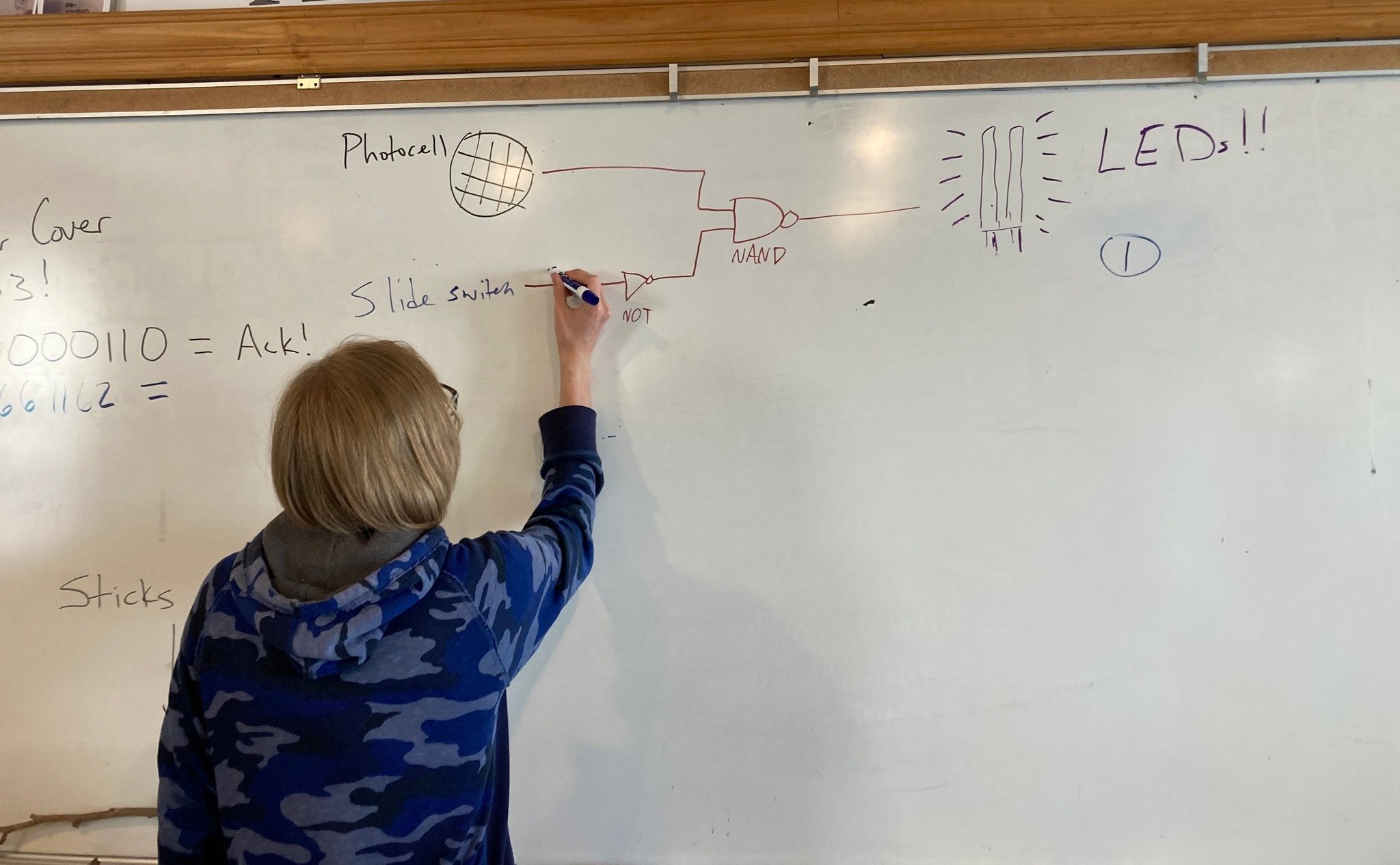The Gates of Logic: Digital and Sentential Logic
(aka “Commit to the Bit!”)
In our first deep-dive of the 2022-2023 school year, students learned about digital and sentential logic.
In the realm of digital logic, we learned basic circuitry (including how transistors, capacitors, and resistors work)--not only abstractly but also concretely, by creating different types of circuits on electronic breadboards. This hands-on application of knowledge was related to our growing understanding of logic gates, the basic building blocks of any digital system--circuits that place the possible values of electric current (on/off) into electronic systems that follow prescribed logical rules, rules that can be described using Boolean algebraic equations, which we also studied. We learned how logic gates and the two possible states of transistors allow for complex logical calculations within a laptop or desktop computer, facilitating every function we take for granted--from graphics to text. We also learned how systems of logic gates work within other real-world applications, such as street lights that come on automatically when it turns dark.
Along the way, we learned about historical forerunners of digital computing, from Jean-Marie Jacquard's 1801 punch-card loom to Charles Babbage's proto-computer built in the mid-nineteenth century to Ada Lovelace's work in response to Babbage's that is considered the first computer program. We also learned how George Boole created an algebra based upon binary truth-value statements (true/false), a mathematical system that was then used by Claude Shannon, who, in 1936, when he was not much older than some of our students, translated Boole's work into the binary language of electricity (on/off), ushering in the modern computer age. We learned, too, the history of data-encoding, which overlaps somewhat with the work of the innovators above.
We used logic gates and Boolean truth tables and "if/then" logic as a segue to sentential logic, the logic of sentences. We learned to spot premise and conclusion indicators in English, and how to spot hidden assumptions that are often encoded in arguments. We also studied the formal structures of sentential logic: valid and invalid syllogism forms and how to identify formal design flaws in arguments by means of the creation of Venn diagrams. We then studied commonly occuring logical fallacies, such as post hoc ergo propter hoc, begging the question, and hasty generalization.
In our Friday seminar time, we read and discussed stories and essays that intersected with the subject matter, themes, or implications of what we were studying. We read stories by Steven Millhauser and Hans Christian Anderson that relate to the idea of rapidly increasing miniaturization in circuitry and to the implications of artificial intelligence. We also studied the microscopic sculptural work of British artist Willard Wigan, MBE, who wrote us a note of thanks after learning that we had learned of his work. We also discussed current events in the areas of computer technology and artificial intelligence. Finally, in light of our branching-narrative game-creation (see below), we read a New Yorker essay that happened to be published the week we wrote our games, all about the history and implications of Choose Your Own Adventure books.
As always, beneath our learning, we were learning how to learn. Students kept well organized binders that divided the subject matter into meaningful categories; they also kept a terms list. They also saw, via an outline, how the aspects of their learning were related.
Students exercised their understanding through exercises and hands-on activities throughout the three weeks, including a game we called "May I Have Your Lunch, Lydia," in which teams of students vied for Lydia's noontime meal using arguments ruined by logical fallacies. Students also demonstrated their understanding via an open-binder test that allowed them to apply their knowledge in ways both creative and analytical.
Students also blended creativity and analysis by creating branching-narrative text-based adventure games in the style of 80's-era computer games (we played some of the games on 80's-era computers). The games allowed the students to express their unique points of view, senses of humor, and personal passions, even as that expression was undergirded by precise applications of Boolean i/then conditional logic within the BASIC computer language they used to create the entertainment.
The students now have well structured binders/external memories that they can call upon in subsequent deep-dives as we seek further, richer connections within all that we discover this year and beyond.
As always, our days also bubbled with constructive, inside jokes; riffs; and fun generated by the students' bright minds (including the "aka" subtitle for the class, above). It is hard to describe all of those wonderful moments here; some have been memorialized on our Star-Splitter Facebook and Instagram pages, to which we encourage you to subscribe in order to catch glimpses of our day-to-day discoveries.
The Star-Splitters demonstrated their understanding of Boolean logic--including if/else variable statements--by creating their own 80s-style text- based adventure games. From a detective story in which the gumshoe must outwit giant logic gates to a classic escape-the-castle adventure to an intricately crafted tale in which the player's point of view changes depending on the choices they make, the games the students created are wonderful expressions of their students' abilities to blend analysis and creativity--a hallmark of a Star-Splitter education.
To create their games, the students mapped out the decision nodes of their adventures, wrote the story's text, then coded the game in BASIC so as to keep the students as close as possible to the circuitry they've been learning about. As co-teacher Mr. Ewy explains, "What I like about BASIC is how each sequential line of code can be compared to an assembly language instruction (even though it probably represents several actual instructions). It's closer to what's happening in the microprocessor."
Oliver created a new logic gate for the improv-loving Star-Splitter Academy: the YES AND gate, which honors any input and adds to it meaningfully.
Surely the time for translating Yoda into a Boolean expression is now, right? That's what we decided, anyway! Here's "Do or not do; there is no try."
At the Star-Splitter Academy, we take silliness seriously: comedy clarifies and connects. To wit: Oliver's new meme!
oday is the birthday of Joel Ewy, our expert collaborator / co-teacher for the Gates of Logic deep dive. In honor of the occasion, Oliver wrote an interactive program for him in BASIC on Mr. Ewy's Apple IIe. Then we all did our traditional Star-Splitter Birthday Spiral of Virtues, in which we play "Happy Birthday" on our kazoos then go around the room in a spiral pattern, with each person turning to the person we are celebrating and telling them something they value about them. What a joy it was to hear our young Star-Splitters celebrate Mr. Ewy. "I've learned so much from you--about 3D Printing, about computers--in such a short amount of time," said one student. "I am able to understand what had just seemed magical." "I greatly enjoy your classes," said another Star-Splitter. "I appreciate the way you show us many ways of seeing things." "You are kind." "You know what to do." "You help us figure things out." "You have a way of rewording things that is clarifying." "I like your jokes."
On Tuesday, we continued to create logic gates with breadboard circuits, then worked on logic gate story problems and how to convert logic gate circuits into expressions of Boolean algebra. Then Finn placed his MacBook Pro on top of the 1983 Apple IIe at the front of the room (creating a stack of circuits that spanned nearly forty years), and using an Apple IIe emulator, downloaded the binary tones that Radiohead secretly encoded on the cassette reissue of OK Computer, and ran the hidden program.
On Tuesday, we continued to create logic gates with breadboard circuits, then worked on logic gate story problems and how to convert logic gate circuits into expressions of Boolean algebra. Then Finn placed his MacBook Pro on top of the 1983 Apple IIe at the front of the room (creating a stack of circuits that spanned nearly forty years), and using an Apple IIe emulator, downloaded the binary tones that Radiohead secretly encoded on the cassette reissue of OK Computer, and ran the hidden program.
On Tuesday, we continued to create logic gates with breadboard circuits, then worked on logic gate story problems and how to convert logic gate circuits into expressions of Boolean algebra. Then Finn placed his MacBook Pro on top of the 1983 Apple IIe at the front of the room (creating a stack of circuits that spanned nearly forty years), and using an Apple IIe emulator, downloaded the binary tones that Radiohead secretly encoded on the cassette reissue of OK Computer, and ran the hidden program.
"I've got resistors on my fingers!" Today the Star-Splitters turned from an abstract understanding of logic gates to a concrete making of those gates using solderless breadboards, batteries, wires, resistors, transistors, momentary switches, and LEDs. The students learned how each of those electronic elements works, as well as the difference between volts, amps, and ohms; Ohm's Law, anodes and cathodes, and much more, courtesy of co-teacher Joel Ewy. We learned, for instance, how resistors are coded via bands of color to indicate their value in Ohms. After Mr. Ewy placed his multi-meter on his finger to test how much resistance his skin provides (5.7 megaohms!), we decided to demonstrate our understanding of the color-coding system using our own digits as resistors.
Green / Violet / Green = 5.7 megaohms!
Mr. Ewy, explaining the elements of an LED and how it works. Edit Like Comment Share
Lydia shared with us on our Google classroom an excerpt from a Squirrel Girl comic she had read this summer, which tied into our study.
Mr. Jensen! Last week, after Star-Splitter parent Michael Jensen installed a new LED for the light outside our schoolhouse, we decided to draw the schematic for the series of Boolean logic gates that likely were at play in the circuits that allowed the light to come on when the photocell sensor indicated darkness (0) and the light switch was on (1).
